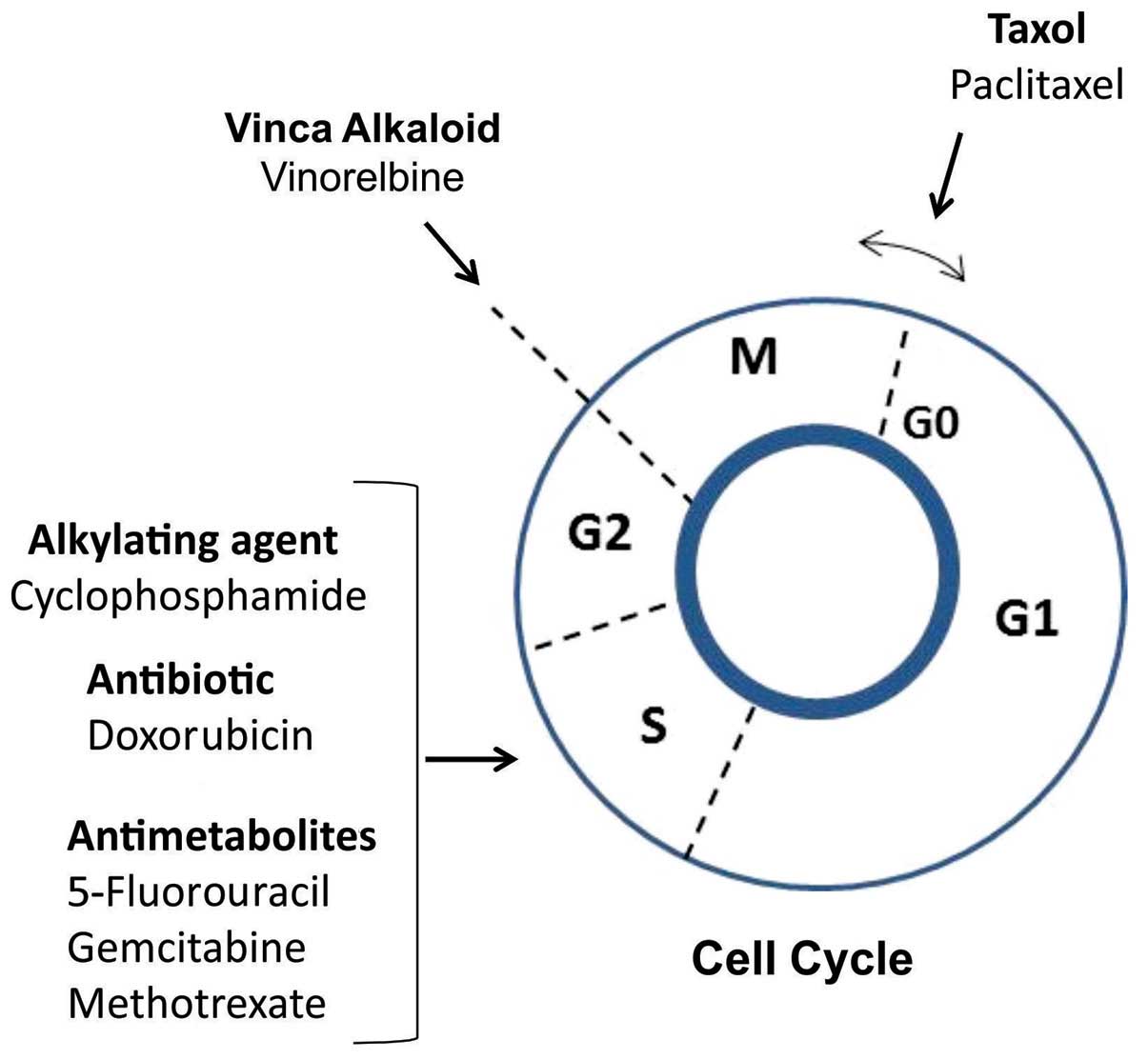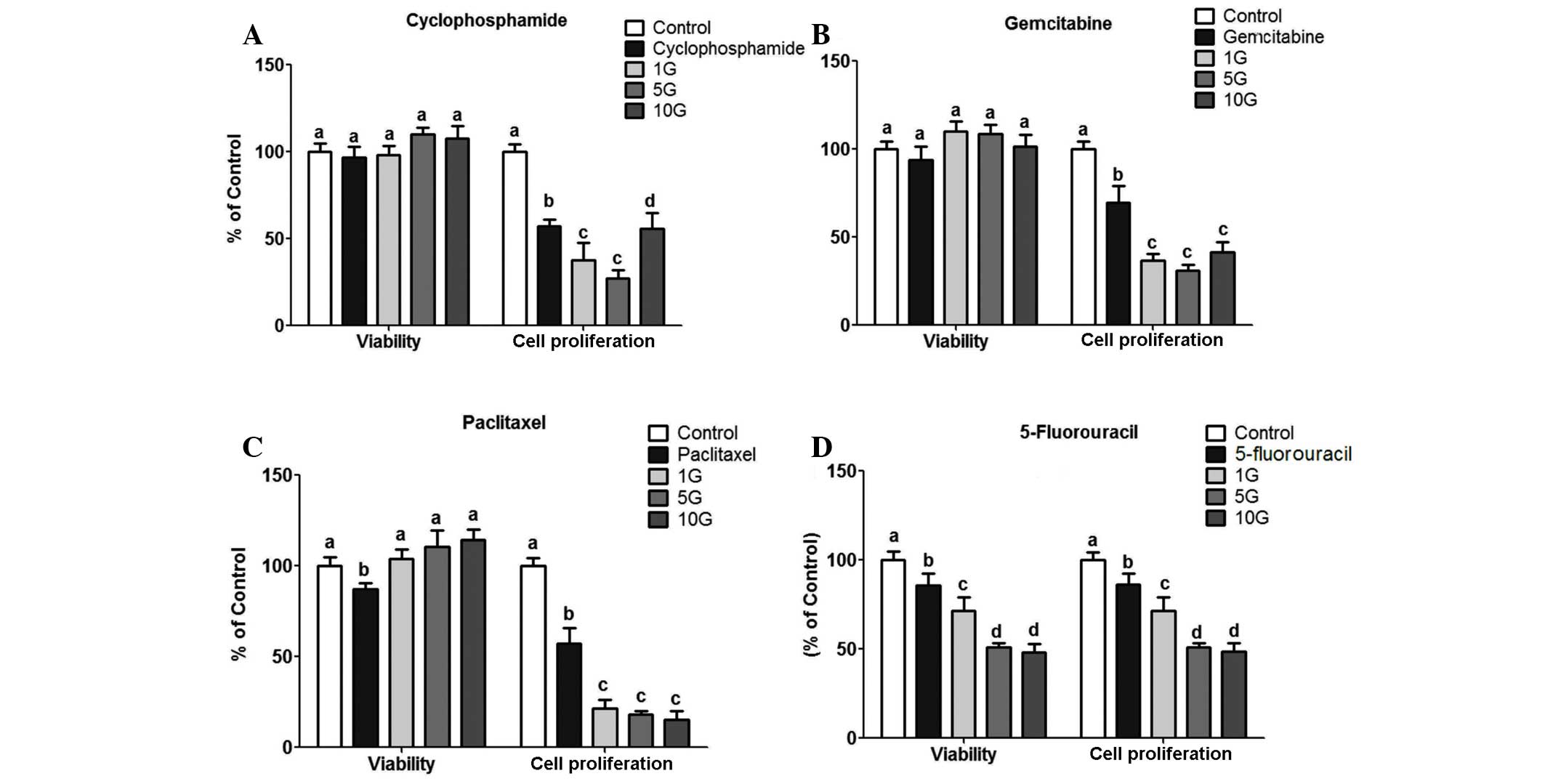|
1
|
Weiss J: Cancer-related fatigue:
prevalence, assessment and treatment strategies. Expert Rev
Pharmacoecon Outcomes Res. 11:441–446. 2011. View Article : Google Scholar : PubMed/NCBI
|
|
2
|
Byar KL, Berger AM, Bakken SL, et al:
Impact of adjuvant breast cancer chemotherapy on fatigue, other
symptoms, and quality of life. Oncol Nurs Forum. 33:E18–E26. 2006.
View Article : Google Scholar : PubMed/NCBI
|
|
3
|
de Jong N, Courtens AM, Abu-Saad HH, et
al: Fatigue in patients with breast cancer receiving adjuvant
chemotherapy: a review of the literature. Cancer Nurs. 25:283–297.
2002.
|
|
4
|
Saligan LN and Kim HS: A systematic review
of the association between immunogenomic markers and cancer-related
fatigue. Brain Behav Immun. 26:830–848. 2012. View Article : Google Scholar : PubMed/NCBI
|
|
5
|
Campos MP, Hassan BJ, Riechelmann R and
Del Giglio A: Cancer-related fatigue: a review. Rev Assoc Med Bras.
57:211–219. 2011.
|
|
6
|
de Oliveira Campos MP, Riechelmann R,
Martins LC, Hassan BJ, Casa FB and Del Giglio A: Guarana
(Paullinia cupana) improves fatigue in breast cancer
patients undergoing systemic chemotherapy. J Altern Complement Med.
17:505–512. 2011.
|
|
7
|
Schimpl FC, da Silva JF, Gonçalves JF and
Mazzafera P: Guaraná: revisiting a highly caffeinated plant from
the Amazon. J Ethnopharmacol. 150:14–31. 2013.
|
|
8
|
del Giglio AB, Cubero Dde I, Lerner TG,
Guariento RT, de Azevedo RG, Paiva H, Goldman C, Carelli B, Cruz
FM, Schindler F, Pianowski L, de Matos LL and del Giglio A:
Purified dry extract of Paullinia cupana (guaraná) (PC-18)
for chemotherapy-related fatigue in patients with solid tumors: an
early discontinuation study. J Diet Suppl. 10:325–334. 2013.
|
|
9
|
Basile A, Ferrara L, Pezzo MD, Mele G,
Sorbo S, Bassi P and Montesano D: Antibacterial and antioxidant
activities of ethanol extract from Paullinia cupana Mart. J
Ethnopharmacol. 102:32–36. 2005. View Article : Google Scholar : PubMed/NCBI
|
|
10
|
Valcic S, Timmermann BN, Alberts DS,
Wächter GA, Krutzsch M, Wymer J and Guillén JM: Inhibitory effect
of six green tea catechins and caffeine on the growth of four
selected human tumor cell lines. Anticancer Drugs. 7:461–468. 1996.
View Article : Google Scholar : PubMed/NCBI
|
|
11
|
Wu AH and Butler LM: Green tea and breast
cancer. Mol Nutr Food Res. 55:921–930. 2011. View Article : Google Scholar : PubMed/NCBI
|
|
12
|
Jiang W, Wu Y and Jiang X: Coffee and
caffeine intake and breast cancer risk: an updated dose-response
meta-analysis of 37 published studies. Gynecol Oncol. 129:620–629.
2013. View Article : Google Scholar : PubMed/NCBI
|
|
13
|
Hill GM, Moriarity DM and Setzer WN:
Attenuation of cytotoxic natural product DNA intercalating agents
by caffeine. Sci Pharm. 79:729–747. 2011. View Article : Google Scholar : PubMed/NCBI
|
|
14
|
Saunders DE, Lawrence WD, Christensen C,
Wappler NL, Ruan H and Deppe G: Paclitaxel-induced apoptosis in
MCF-7 breast-cancer cells. Int J Cancer. 70:214–220. 1997.
View Article : Google Scholar : PubMed/NCBI
|
|
15
|
Martins IL, Miranda JP, Oliveira NG,
Fernandes AS, Gonçalves S and Antunes AM: Synthesis and biological
activity of 6-selenocaffeine: potential modulator of
chemotherapeutic drugs in breast cancer cells. Molecules.
18:5251–5264. 2013. View Article : Google Scholar : PubMed/NCBI
|
|
16
|
Bittencourt LS, Machado DC, Machado MM, et
al: The protective effects of guaraná extract (Paullinia
cupana) on fibroblast NIH-3T3 cells exposed to sodium
nitroprusside. Food Chem Toxicol. 53:119–125. 2013.
|
|
17
|
Mosmann T: Rapid colorimetric assay for
cellular growth and survival: application to proliferation and
cytoxicity assays. J Immunol Methods. 65:55–63. 1983. View Article : Google Scholar : PubMed/NCBI
|
|
18
|
Trebunova M, Laputkova G, Slaba E,
Lacjakova K and Verebova A: Effects of docetaxel, doxorubicin and
cyclophosphamide on human breast cancer cell line MCF-7. Anticancer
Res. 32:2849–2854. 2012.PubMed/NCBI
|
|
19
|
Major PP, Egan EM, Sargent L and Kufe DW:
Modulation of 5-FU metabolism in human MCF-7 breast carcinoma
cells. Cancer Chemother Pharmacol. 8:87–91. 1982. View Article : Google Scholar : PubMed/NCBI
|
|
20
|
Matsuoka H, Furusawa M, Tomoda H and Seo
Y: Difference in cytotoxicity of paclitaxel against neoplastic and
normal cells. Anticancer Res. 14:163–167. 1994.PubMed/NCBI
|
|
21
|
Sugiyama K, Shimizu M, Akiyama T, Ishida
H, Okabe M, Tamaoki T and Akinaga S: Combined effect of navelbine
with medroxyprogesterone acetate against human breast carcinoma
MCF-7 cells in vitro. Br J Cancer. 77:1737–1743. 1998. View Article : Google Scholar : PubMed/NCBI
|
|
22
|
Zeybek ND, Inan S, Ekerbicer N, Vatansever
HS, Karakaya J and Muftuoglu SF: The effects of gemcitabine and
vinorelbine on inducible nitric oxide synthase (iNOS) and
endothelial nitric oxide synthase (eNOS) distribution of MCF-7
breast cancer cells. Acta Histochem. 113:62–67. 2011. View Article : Google Scholar : PubMed/NCBI
|
|
23
|
Barros S, Mencia N, Rodríguez L, Oleaga C,
Santos C, Noé V and Ciudad CJ: The redox state of cytochrome
c modulates resistance to methotrexate in human MCF7 breast
cancer cells. PLoS One. 8:e632762013.PubMed/NCBI
|
|
24
|
Hattangadi DK, DeMasters GA, Walker TD,
Jones KR, Di X, Newsham IF and Gewirtz DA: Influence of p53 and
caspase 3 activity on cell death and senescence in response to
methotrexate in the breast tumor cell. Biochem Pharmacol.
68:1699–1708. 2004. View Article : Google Scholar : PubMed/NCBI
|
|
25
|
Patterson AV, Zhang H, Moghaddam A,
Bicknell R, Talbot DC, Stratford IJ and Harris AL: Increased
sensitivity to the prodrug 5′;-deoxy-5-fluorouridine and modulation
of 5-fluoro-2′;-deoxyuridine sensitivity in MCF-7 cells transfected
with thymidine phosphorylase. Br J Cancer. 72:669–675. 1995.
|
|
26
|
Fukui M, Yamabe N and Zhu BT: Resveratrol
attenuates the anticancer efficacy of paclitaxel in human breast
cancer cells in vitro and in vivo. Eur J Cancer. 46:1882–1891.
2010. View Article : Google Scholar : PubMed/NCBI
|
|
27
|
Singh N, Nigam M, Ranjan V, et al:
Resveratrol as an adjunct therapy in cyclophosphamide-treated MCF-7
cells and breast tumor explants. Cancer Sci. 102:1059–1067. 2011.
View Article : Google Scholar : PubMed/NCBI
|
|
28
|
Cragg GM and Newman DJ: Plants as a source
of anti-cancer agents. J Ethnopharmacol. 100:72–79. 2005.PubMed/NCBI
|
|
29
|
Campos AR, Barros AI, Santos FA and Rao
VS: Guaraná (Paullinia cupana Mart.) offers protection
against gastric lesions induced by ethanol and indomethacin in
rats. Phytother Res. 17:1199–1202. 2003.
|
|
30
|
Otobone FJ, Sanches AC, Nagae R, Martins
JV, Sela VR, de Mello JC and Audi EA: Effect of lyophilized
extracts from guaraná seeds [Paullinia cupana var.
sorbilis (Mart.) Ducke] on behavioral profiles in rats.
Phytother Res. 21:531–535. 2007.
|
|
31
|
Roncon CM, Biesdorf de Almeida C, Klein T,
de Mello JC and Audi EA: Anxiolytic effects of a semipurified
constituent of guaraná seeds on rats in the elevated T-maze test.
Planta Med. 77:236–241. 2011.PubMed/NCBI
|
|
32
|
Fukumasu H, Latorre AO and Zaidan-Dagli
ML: Paullinia cupana Mart. var. sorbilis, guarana,
increases survival of Ehrlich ascites carcinoma (EAC) bearing mice
by decreasing cyclin-D1 expression and inducing a G0/G1 cell cycle
arrest in EAC cells. Phytother Res. 25:11–16. 2011. View Article : Google Scholar
|
|
33
|
Fukumasu H, Avanzo JL, Nagamine MK,
Barbuto JA, Rao KV and Dagli ML: Paullinia cupana Mart var.
sorbilis, guaraná, reduces cell proliferation and increases
apoptosis of B16/F10 melanoma lung metastases in mice. Braz J Med
Biol Res. 41:305–310. 2008. View Article : Google Scholar
|
|
34
|
Fukumasu H, da Silva TC, Avanzo JL, et al:
Chemopreventive effects of Paullinia cupana Mart var.
sorbilis, the guaraná, on mouse hepatocarcinogenesis. Cancer
Lett. 233:158–164. 2006.
|
|
35
|
Ifergan I, Shafran A, Jansen G, Hooijberg
JH, Scheffer GL and Assaraf YG: Folate deprivation results in the
loss of breast cancer resistance protein (BCRP/ABCG2) expression. A
role for BCRP in cellular folate homeostasis. J Biol Chem.
279:25527–25534. 2004. View Article : Google Scholar
|
|
36
|
Teicher BA, Holden SA, Herman TS, Epelbaum
R, Pardee AB and Dezube B: Efficacy of pentoxifylline as a
modulator of alkylating agent activity in vitro and in vivo.
Anticancer Res. 11:1555–1560. 1991.PubMed/NCBI
|
|
37
|
Ding R, Shi J, Pabon K and Scotto KW:
Xanthines down-regulate the drug transporter ABCG2 and reverse
multidrug resistance. Mol Pharmacol. 81:328–337. 2012. View Article : Google Scholar : PubMed/NCBI
|
|
38
|
Seeram NP, Zhang Y and Nair MG: Inhibition
of proliferation of human cancer cells and cyclooxygenase enzymes
by anthocyanidins and catechins. Nutr Cancer. 46:101–106. 2003.
View Article : Google Scholar : PubMed/NCBI
|
|
39
|
Alshatwi AA: Catechin hydrate suppresses
MCF-7 proliferation through TP53/caspase-mediated apoptosis. J Exp
Clin Cancer Res. 29(167)2010. View Article : Google Scholar : PubMed/NCBI
|
|
40
|
Farabegoli F, Papi A, Bartolini G, Ostan R
and Orlandi M: (-)-Epigallocatechin-3-gallate downregulates Pg-P
and BCRP in a tamoxifen resistant MCF-7 cell line. Phytomedicine.
17:356–362. 2010. View Article : Google Scholar : PubMed/NCBI
|
|
41
|
Fix LN, Shah M, Efferth T, Farwell MA and
Zhang B: MicroRNA expression profile of MCF-7 human breast cancer
cells and the effect of green tea polyphenon-60. Cancer Genomics
Proteomics. 7:261–277. 2010.PubMed/NCBI
|















